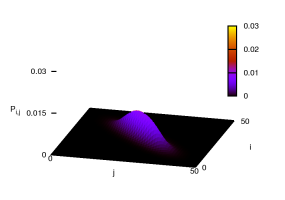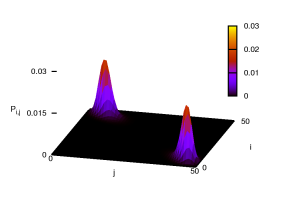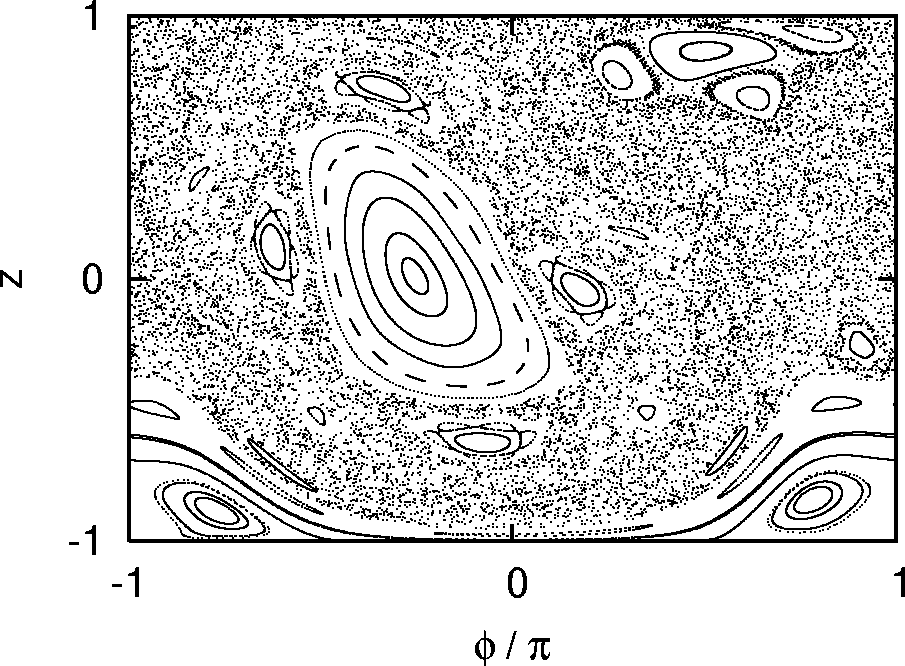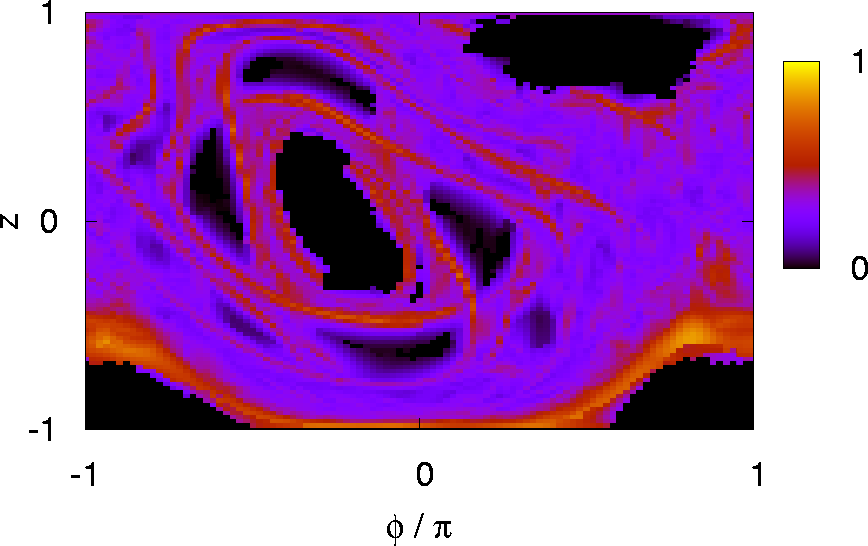Condensed Matter Theory
Mesoscopic entanglement

The generation of mesoscopic entangled states (highly non-classical quantum correlations) is a hot topic of current research. The focus of our group is to devise schemes for entanglement generation.Generation of Mesoscopic Bell states in a double well potential
Considering a two-component Bose-Einstein condensate in a double-well potential, a method to generate a Bell state consisting of two spatially separated condensates is suggested. For repulsive interactions, the required tunnelling control is achieved numerically by varying the amplitude of a sinusoidal potential difference between the wells. Both numerical and analytical calculations reveal the emergence of a highly entangled mesoscopic state. The target state is given by the mesoscopic superposition of all particles of species A in the right well and all particles of species B in the left well superimposed with all particles of species A in the left well and all particles of species B in the right well:

- N. Teichmann and C. Weiss: Coherently controlled entanglement generation in
a binary Bose-Einstein condensate,
EPL 78, 10009 (2007). (arXiv:cond-mat/0702241) - C. Weiss and N. Teichmann:
Generation of mesoscopic superpositions of a binary Bose-Einstein condensate in a slightly asymmetric double well,
Laser Phys. Lett. 4, 895 (2007). (arXiv:0707.4061)
Differences between mean-field dynamics and N-particle quantum dynamics as a signature of entanglement
We investigated a Bose-Einstein condensate in a tilted double-well potential under the influence of time-periodic potential differences in the regime where the mean-field (Gross-Pitaevskii) dynamics become chaotic. For some parameters near stable regions, even averaging over several condensate oscillations does not remove the differences between mean-field and N-particle results. While introducing decoherence via piecewise deterministic processes reduces those differences, they are due to the emergence of mesoscopic entangled states in the chaotic regime. The right plot below shows the Poincaré surface of section for the system described within the mean-field picture. Closed loops indicate regular dynamics while dots show up in the chaotic regions. The right plot depicts the emergence of entangled states in dependence of the initial state characterized by a population imbalance z and a phase φ.


- C. Weiss and N. Teichmann:
Differences between mean-field dynamics and N-particle quantum dynamics as a signature of entanglement,
Phys. Rev. Lett. 100, 140408 (2008). (arXiv:0805.0531)
- C. Weiss and N. Teichmann:
Signatures of chaos-induced mesoscopic entanglement,
J. Phys. B: At. Mol. Opt. Phys. 42, 031001 (2009).
- C. Weiss and N. Teichmann:
Bose-Einstein condensates in a double well: mean-field chaos and multi-particle entanglement
,
to be published in the proceedings of the LPHYS08 (arXiv:0811.1136)